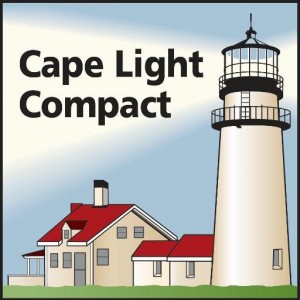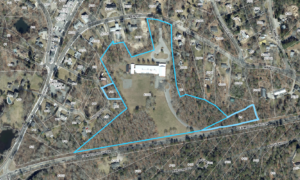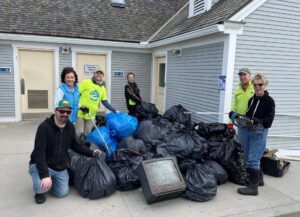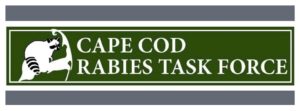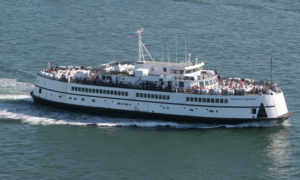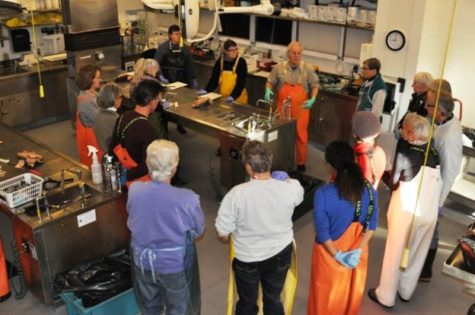
COURTESY OF THE WELLFLEET BAY WILDLIFE SANCTUARY: Sanctuary director Bob Prescott gives instructions before a session at a necropsy lab at WHOI’s Quissett Campus (photo by Krill Carson).
WOODS HOLE – The 2016 sea turtle stranding season came to a close earlier this winter and now researchers are using the turtles that didn’t survive to further study the different species.
Wellfleet Bay Wildlife sanctuary researchers have spent the first few months of 2017 conducting necropsies on Kemp’s ridleys, greens and loggerheads at a state-of-the-art lab at the Woods Hole Oceanographic Institution to study turtle growth, diets and parasites.
Researchers have also sent 30 carcasses to a National Oceanic and Atmospheric Administration facility in Mississippi to study how fast turtles decompose in the Gulf of Mexico, along with drift patterns.
Five carcasses of Kemp’s ridleys, the most endangered sea turtle in the world, were also sent to a NOAA facility in Galveston, Texas for experiments to find methods to determine the sex of live immature turtles.
Currently, determining the sex of a live juvenile sea turtle can only be done through a minor surgical procedure.
The 2016 cold-stunned stranding season was the third busiest on record with 476 turtles washing up on Cape Cod beaches.
Brewster beaches saw the most rescue activity with 179 turtles recovered, which was more than twice as many as any other town.










